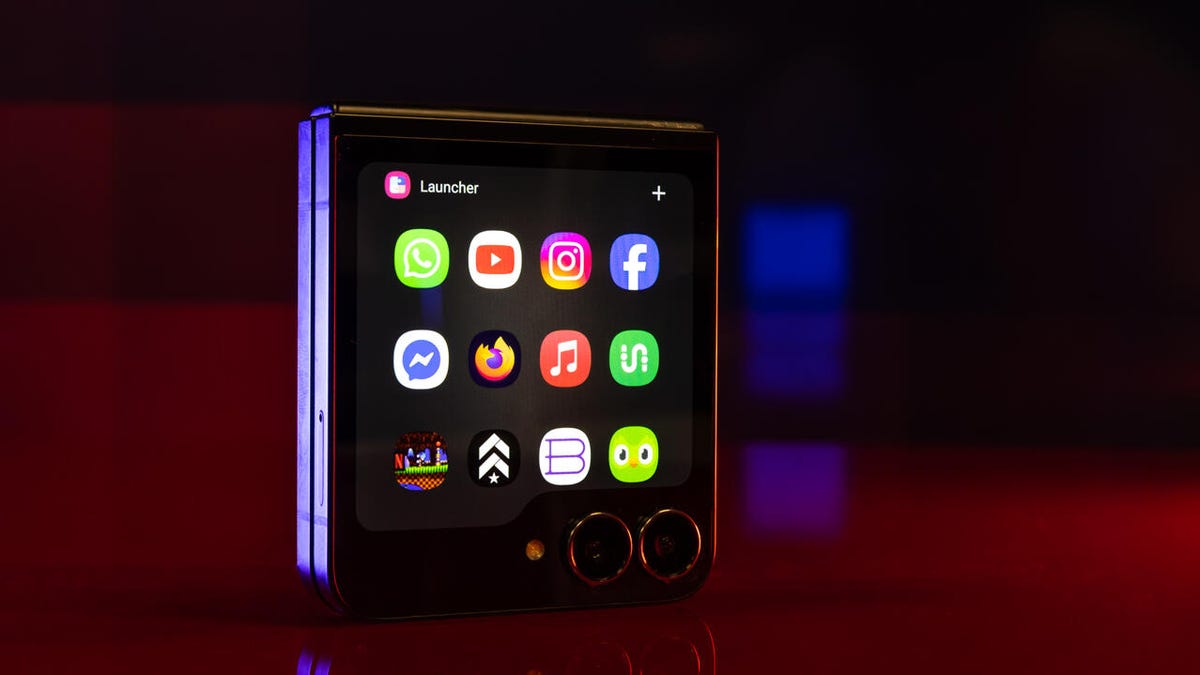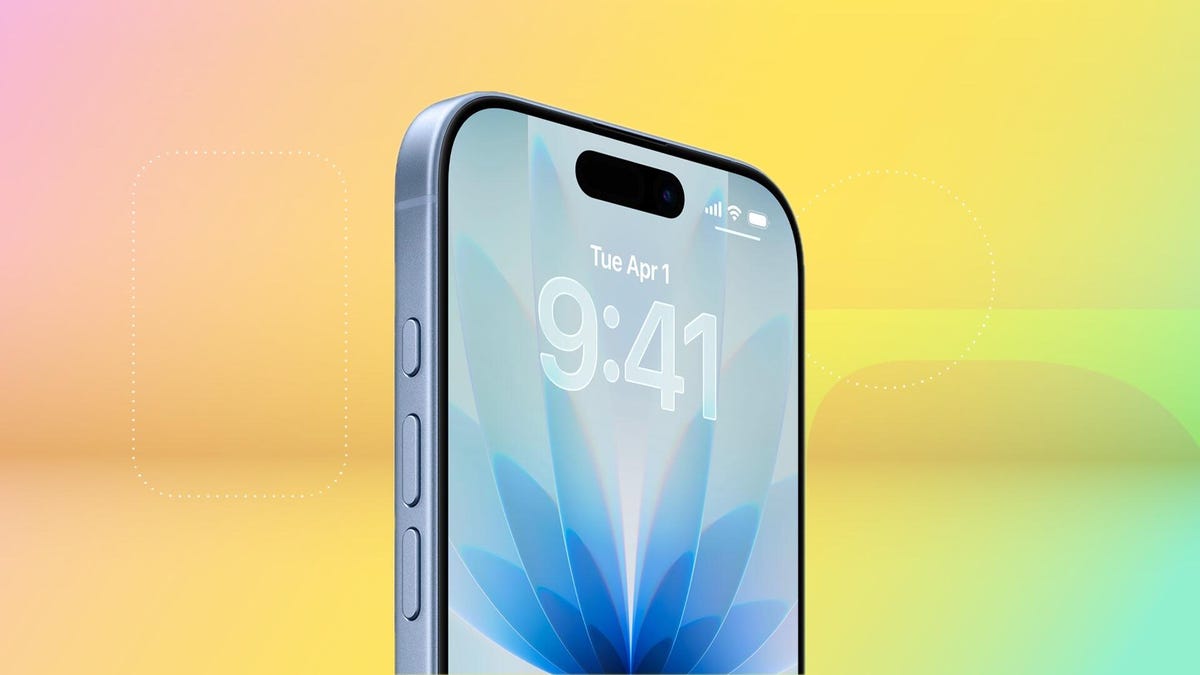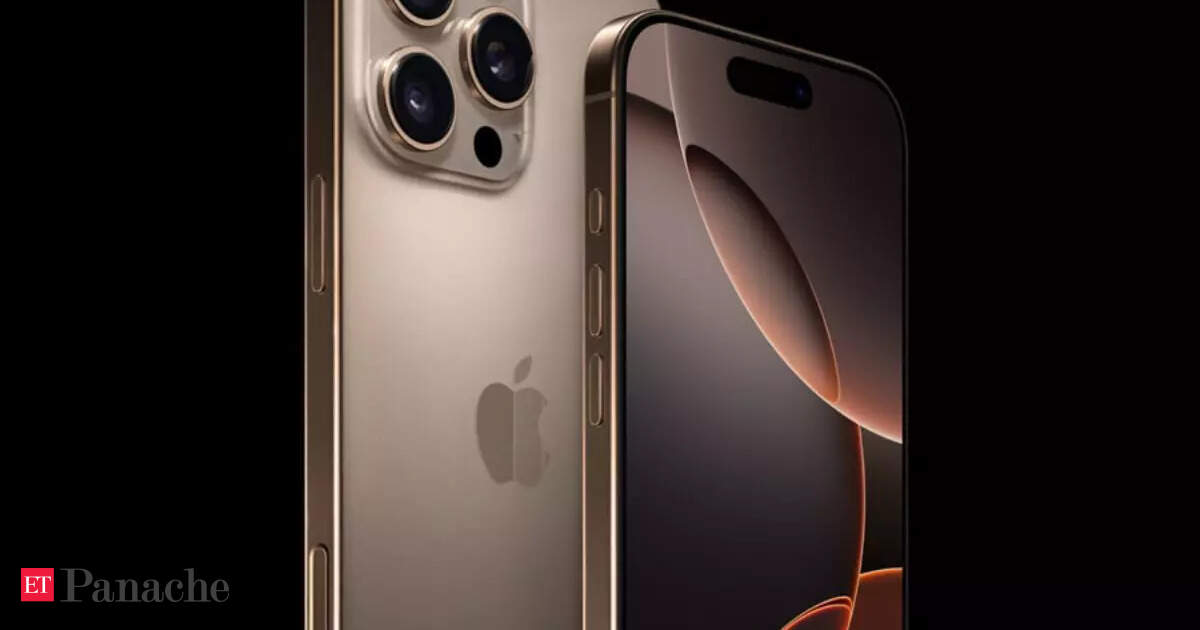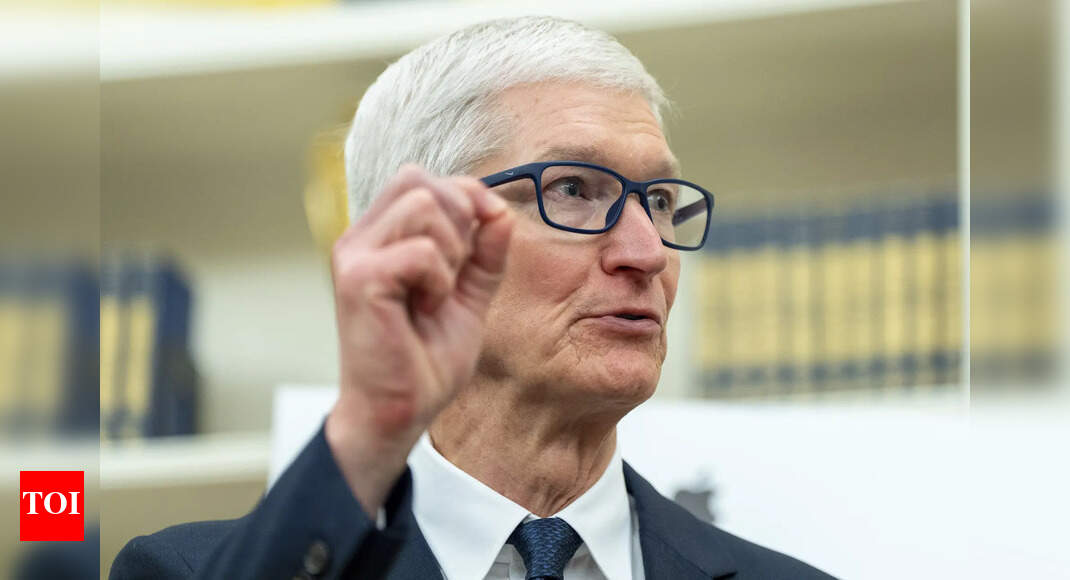
Pros
- The same software experience as the Z Flip 7
- Smaller cover screen is still functional
- Cameras the same as the Flip 6 and Flip 7
Cons
- Fingerprint and dust magnet
- May run warm
- Battery life gets through a day, but not much more
I’ve spent a few weeks testing Samsung’s $900 Galaxy Z Flip 7 FE, and while I’d love to say it’s just a slightly less powerful version of last year’s Z Flip 6 and a less-expensive alternative to the $1,100 Galaxy Z Flip 7, there are moments when the phone feels a little too cheap for its price.
That’s not to say the Flip 7 FE is bad, because the phone does use the same body as last year’s Flip 6. This means it has the same 3.4-inch cover screen that is easy for me to tap out quick texts or glance at map directions, along with the same cameras that are powerful enough to use in dark and bright settings. Its ability to fold in half makes it easy to use the phone as a tripod for my photos, or to prop up on my desk to play YouTube videos. It’s even able to use the same phone cases as the Galaxy Z Flip 6.
But you’ll likely find that a case is necessary in order to truly enjoy using the Z Flip 7 FE. That’s partly because of the phone’s oleophobic coating is a fingerprint magnet — at least on the black review sample I tested. Its hinge easily accumulates skin oil and pocket lint on the outside which is something I find to be more common on phones that cost $300, not $900.
The Galaxy Z Flip 7 FE in its flex position.
I also found the phone to run a little warm. My initial review unit ran warm enough during a 40-minute video call with light web browsing that the phone displayed a message that I could no longer do both at the same time, as the phone was now too hot. Samsung provided me a second review unit which did not get as warm under similar use. But if you’re someone who gets particularly sensitive to noticing when your phone gets warm, having a case should help.
But putting those design-related issues aside, the Flip 7 FE makes a lot of smart choices to be Samsung’s first flip phone priced under $1,000. The FE uses Samsung’s Exynos 2400 processor, which is capable of handling apps and Galaxy AI features, but is slower than the Qualcomm chip in the Flip 6.
Even though the $700 Motorola Razr is cheaper and has several fun design choices, I can see how Samsung might justify its $900 price, thanks to the Flip 7 FE’s superior software experience and photography. And recent sales are closing that price gap: at the time of this writing, the Flip 7 FE costs $700 for its 128GB model and $760 for 256GB. Both models are normally $200 more, and the Flip 7 FE offered for $700 then becomes a much easier recommendation over the Razr when you consider all of the software support Samsung offers.
The Flip 7 FE also get’s Samsung’s Now Brief for highlighting your schedule and other essential information like the weather all in one place.
My experience with the Galaxy Z Flip 7 FE
While I’m not crazy about the Z Flip 7 FE’s need to be in a case to guard against fingerprints, I have to admit that the phone remains quite fun to use.
The Flip 7 FE’s cameras (a 50-megapixel wide, 12-megapixel ultrawide and 10-megapixel selfie camera) and the ability to use the phone as its own tripod are certainly the main reasons to consider this phone. I brought the Flip 7 FE to Utopia Bagels, and despite not having a telephoto lens, my 1x and 2x shots taken on the wide-angle camera of a sausage, egg and cheese bagel with red onion and tomatoes are filled with detail.
A sausage, egg and cheese bagel taken at 1x zoom on the Samsung Galaxy Z Flip 7 FE.
On the 2x shot in particular, you get the cheese drip, the dimples of the bread inside the bagel and noticeable color separation between the sausage patty and the red onion slices.
Taken on the Z Flip 7 FE’s wide angle lens at 2x zoom.
And like with other flip-style Android phones, it’s easy to make use of the main camera for selfies by having the phone prop itself up like a stand, and then making a hand gesture that activates a camera timer. This works with both the rear camera and the front-facing camera inside the screen. In both of my photos, the focus is on my face, and, as expected, there are slightly fewer details available in the food for the photo taken with the interior screen’s 10-megapixel camera.
Self-taken photo with the 50-megapixel wide angle camera on the Z Flip 7 FE.
Self-taken photo with the 10-megapixel front-facing camera that’s positioned on the interior display.
The Flip 7 FE can also capture video at 4K resolution and 60 frames per second, matching the Flip 7. Oddly, you’re limited to shooting at 1,080p from the main camera when the phone is folded into a stand. Similar to the Motorola Razr, you can also fold the phone into a “camcorder” mode to use the top half of the internal screen like a viewfinder.
Recycling the Flip 6’s design means that apps that were optimized for that device readily work here. I use the Transit app for subway directions, and it’s easy for me to navigate the 3.4-inch display and type in my destination, as well as scroll through those directions.
A smaller edition of Samsung’s Now Bar — a shortcut of active apps that’s similar to the iPhone’s Dynamic Island — gives me fast access to my music and podcasts while I look at those directions, and I especially enjoy treating the cover screen like a mini-music player a la the MP3 players of the 2000s.
But if you do use cameras extensively, be prepared to recharge the phone more often than you’d expect. The 4,000-mAh battery is the same as what’s on the Flip 6, and in my use, it just barely got through a day of use (albeit the weekend when I use my phone the most). My battery life fared better on office days, where heavier use was limited to morning and evening, but I typically ended with 10% to 30%, making an overnight charge necessary.
This was also noticed in CNET’s battery tests, where the Z Flip 7 FE drained faster than the Z Flip 7 and Motorola’s Razr (2025) and Razr Ultra in our 45-minute endurance test and the 3-hour YouTube streaming test. In the 45-minute test, the Flip 7 FE performs equal to the Flip 6. In our 30-minute wired charging test, the phone’s 25-watt charging speed brought the battery up from 0% to 45% in 30 minutes. The Flip 7 FE also supports 15-watt Qi wireless charging.
Samsung’s flip is more powerful, but Motorola’s has personality
The Samsung Galaxy Z Flip 7 FE and Motorola Razr (2025).
Because Samsung’s Flip 7 FE costs $200 more than the $700 Motorola Razr when the former isn’t discounted, it’s important for Samsung’s phone to earn that premium. And on a software level, it unequivocally does.
The Flip 7 FE’s operating system — running the brand new Android 16 and debuting Samsung’s One UI 8 overlay — looks great, and Samsung plans to update the phone with software and security updates for seven years. This is a far cry from the three-year update cycle (and four-year security upgrades) of the Razr. The Razr doesn’t yet have Android 16, but will eventually get the update.
In benchmark testing for the CPU (Geekbench 6), the Flip 7 FE performed better than the Razr (2025) but worse than the Flip 6 and Flip 7. And in a benchmark test for graphics (3DMark), it did better than the Razr (2025), and almost identical to the Flip 7.
Geekbench v.6.0
Motorola Razr (2025) 1,069 2,995Samsung Galaxy Z Flip 7 FE 1,575 5,408Samsung Galaxy Z Flip 6 2,237 6,777Samsung Galaxy Z Flip 7 2,216 7,338
3DMark Wild Life Extreme
Motorola Razr (2025) 1,023Samsung Galaxy Z Flip 7 FE 3,979Samsung Galaxy Z Flip 6 4,290Samsung Galaxy Z Flip 7 3,945
The Flip 7 FE’s ability to tackle low-light photography is also easily better than what Motorola provides with the Razr. I took both phones to CNET’s TV lab — which is a very dark space — and the Samsung phone was able to light it up despite there being very little available light. Meanwhile, the Razr photo looks borderline unusable.
Taken on the Samsung Galaxy Z Flip 7 FE.
Taken on the Motorola Razr (2025).
The Razr has a slightly larger 3.6-inch cover screen, but I found both phones to be equally functional. In some cases, despite having a smaller screen, the Z Flip 7 FE would show more information. For instance, with Mozilla Firefox loaded on each, the Z Flip 7 FE chooses to zoom out a little bit on this comparison of CNET’s homepage.
The CNET homepage loaded on both the Galaxy Z Flip 7 FE (left) and the Motorola Razr, both running in the Mozilla Firefox browser.
The Motorola Razr lets you run any Android app on the cover screen by default, but doing so on the Galaxy Z Fold 7 FE requires downloading Samsung’s Good Lock app.
To use apps on the cover screen, you need to first install Samsung’s Good Lock.
Both phones have access to their respective Galaxy AI and Moto AI feature suites for generative AI and adopt different tactics. Galaxy AI mostly focuses on translation, transcription and photo editing features like Generative Edit for removing objects. Moto AI blends multiple services together, including using Perplexity for contextual service, Meta’s Llama AI for summarizing notifications and Motorola’s own features that are focused on photo processing. But it’s still early days for most AI features like these, and I wouldn’t say one is necessarily better than the other as of yet.
But whereas the Galaxy provides better photography and software support, the Razr just looks aesthetically better. The Galaxy Z Flip 7 FE comes only in a black-and-white finish that easily picks up fingerprints, dirt and lint. The Razr ships in four colors with varying materials. My Motorola Razr (2025) review unit came in Pantone Spring Bud green and has a leather-like back that doesn’t pick up fingerprints.
Apps like YouTube are optimized to put the video on the top half of the display when folded.
Galaxy Z Flip 7 FE: Bottom line
Samsung’s Galaxy Z Flip 7 FE is a good phone that’s worth the premium over the $700 Motorola Razr, but its $900 price feels awkward. By being so similar to the Flip 6 in design but having a slightly slower processor, it’s quite possible that a better overall value could be a discounted Flip 6 in the event you find last year’s model for a similar $900 price. If the Flip 7 FE itself is discounted into the $700 range, like we are currently seeing at Amazon, then choosing Samsung over Motorola is absolutely the move. But without the sales, the Flip 7 FE could be a good upgrade for someone who prefers Samsung phones, is curious about getting a flip-style phone and wants a more compact handset with decent cameras.
Most people looking for an affordable flip phone, however, should either consider saving more money by going with Motorola’s $700 Razr (2025), or spring upward for the $1,000 Razr Plus or $1,100 Flip 7. All of these alternatives start with double the storage of the Flip 7 FE with 256GB of space, and have larger cover displays. You could also consider buying a Galaxy Z Flip 6 with 256GB of storage, which can be found (at time of publishing) for $899 on Amazon. That gets you a Snapdragon 8 Gen 3 processor and more RAM. In his review for the Flip 6, CNET’s Patrick Holland noted that the phone got warm occasionally but didn’t have any overheating issues. It’s likely because it had a vapor chamber cooling system. It’s unclear if the Flip 7 FE has the same cooling system.
Watch this: Ultra Thin: First Look at the Galaxy Z Fold 7 and Z Flip 7
How we test phones
Every phone tested by CNET’s reviews team was actually used in the real world. We test a phone’s features, play games and take photos. We examine the display to see if it’s bright, sharp and vibrant. We analyze the design and build to see how it is to hold and whether it has an IP-rating for water resistance. We push the processor’s performance to the extremes using standardized benchmark tools like GeekBench and 3DMark, along with our own anecdotal observations navigating the interface, recording high-resolution videos and playing graphically intense games at high refresh rates.
All the cameras are tested in a variety of conditions, from bright sunlight to dark indoor scenes. We try out special features like night mode and portrait mode and compare our findings against similarly priced competing phones. We also check out the battery life by using it daily as well as running a series of battery drain tests.
We consider additional useful features like support for 5G, satellite connectivity, fingerprint and face sensors, stylus support, fast charging speeds and foldable displays, among others, that can be useful. We balance all of this against the price to give you the verdict on whether that phone, whatever its price, actually represents good value. While these tests may not always be reflected in CNET’s initial review, we conduct follow-up and long-term testing in most circumstances.





